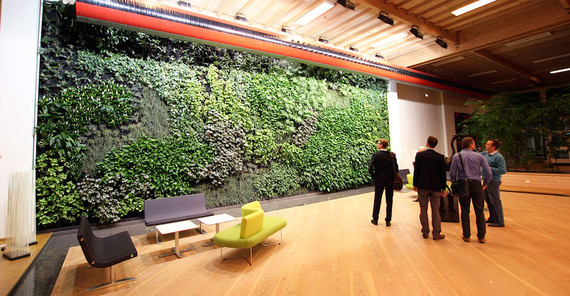Our trip starts in foggy Berlin. Due to a 90 minutes delay of our flight, we miss our connecting train in Copenhagen and have already to adjust our tight schedule. We arrive in Kolding in the late afternoon and meet Tina Thomsen (Project Manager of Design City Kolding) and Ulrik Jungerson, who is Head of Design at the Kolding Municipality Design Secretariat.
In Jungerson’s office in the city center they explain the backgrounds that led to the development of the project Design City Kolding:A continuous decrease in population, a growing gap between an inflexible public administration, which is heavily affected by outsourcing, and a private sector marked by an ever higher demand for efficiency due to globalization and not least, a social system operating at its limits.
Jungerson describes the difficult initial situation openly and authentically. Kolding was a typical Western European and rather rural city before the Design City Kolding project started in 2009/2010. It was about to fall behind in the global race. It was therefore the right time for the new urban development project: The decision to reinvent the city with the brand and philosophy Design City Kolding was influenced not only by the pressure to act but also by the election of a strong personality into a leading position in the municipal government as well as the concentration of important Danish design schools in Kolding.
Previous contacts to the HPI School of Design Thinking in Potsdam gave the first impulses that formed the basis for developing design-oriented innovation management geared to the needs of an urban community. These aspects were also integrated into the new business development strategy as a unique selling proposition of the region.
Innovation, Jungerson says, mainly means growth for Kolding. This can pave the careers of students from Denmark and abroad and also provides long-term perspectives for start-ups in the region. The Head of Design considers the simplicity of this innovative process management a key to its success. Social compassion, ambition, perseverance, and flat hierarchies influence the overall process in a positive way. Moreover, executives are open-minded about an experimental and very liberal approach and well-structures knowledge management, which includes a guide as a practical tool as well as interactive seminars and workshops.
Our informative discussion with Tina and Ulrik raises many interesting questions. However, time is pressing and so we go together with Tina to our next appointment, the IBC Innovation Factory. The Chief Press Officer Jacob Hille welcomes us for a tour of the premises of the modern think tank in the early evening. IBC Innovation Factory came into being due to a redevelopment project of the varnish producer GORI in 1978. After a fire the building was developed by the architectural practice schmidt hammer lassen and the International Business College (IBC) Kolding in the spirit of the original factory design. Its architecture and design thinking create a new and open learning environment that is supposed to initiate innovative thinking and learning processes.
The remarkable open-plan rooms captivate with their excellent acoustics and interior design. Sometimes open and comfortable and sometimes secluded seats invite you to stay and exchange your ideas. The materials and colors used in the open areas create a quiet, lively or particularly modern atmosphere, which is acoustically supported by (real!) chirping birds and gently rolling waters. Our tour is over much too soon. With lots of interesting ideas and a few questions that remained open, we head to the Design City Kolding offices of Bjert Invest.
Although it is already evening, cluster manager Thit Juul Madsen (Design to Innovate) joins us spontaneously for a few minutes. She speaks about her work in the design cluster that links the private and public sector. We all try to summarize the many impressions and thank Tina for the impressive day before we rush to the train that will take us back to Copenhagen tonight.
Previous journal entry
Next journal entry
Journal overview
Text: Delegation Team,
Translation: Susanne Voigt,
Online editing: Silvana Seppä

